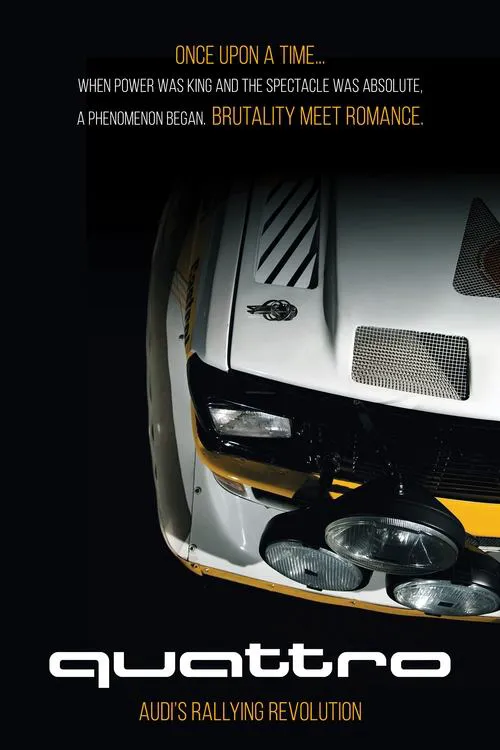quattro

Plot
In the late 1970s, the world of motorsports was abuzz with innovation. The introduction of new technologies and designs was constantly being pushed to new extremes, driving the evolution of rally racing. It was amidst this climate of creativity that Audi engineers turned their attention to the concept of a four-wheel drive rally car. The FIA, the governing body of international motor sport, had imposed a ban on such vehicles, but Audi saw an opportunity to challenge the status quo. The initial approach by Audi engineers was to consult with the FIA regarding the homologation of their proposed vehicle. The term 'homologation' refers to the process by which a new car design is approved for use in racing by the governing body. However, unbeknownst to Audi, the FIA had other plans. They were more than willing to grant Audi permission to create their four-wheel drive car, largely due to the lack of significant opposition. Following the 1979 FIA Yearbook, which lifted the ban on all-wheel drive vehicles, Audi's design for the revolutionary quattro gained momentum. Many spectators anticipated that the quattro would resemble a Jeep or some other type of off-road vehicle. But as the design took shape, a new and sleek appearance began to emerge. Expectations were quickly upended as the quattro took on a unique and captivating form that left onlookers speechless. The birth of the quattro marked a pivotal moment in the history of rally racing. It represented the culmination of a vision that had long been in the making and would change the course of the sport forever. Audi's engineers worked tirelessly to fine-tune their design, addressing any concerns that might have arisen from the FIA's recent reversal on the all-wheel drive ban. The quattro's introduction to the rally scene sent shockwaves through the motorsport community. Its innovative design and advanced technology made it an immediate contender. With its ability to transfer power to all four wheels, the quattro possessed an unparalleled level of traction and stability. This, coupled with its exceptional performance and handling capabilities, solidified its position as a force to be reckoned with. As news of the quattro spread, enthusiasts from far and wide flocked to witness its debut. Their numbers swelled by tens of thousands, and the quattro quickly captured the imagination of the rallying fraternity. It was as if a new era had dawned, one that promised to bring a fresh perspective to the sport. Audi's bold move had effectively opened the floodgates for innovative designs, pushing the boundaries of what was thought possible. Within a short span of time, the quattro established itself as a formidable presence on the rally circuit. Its influence extended beyond the confines of the sport itself. The quattro symbolized a revolution in automotive engineering, inspiring future generations of manufacturers to explore untapped territories in car design and performance. The birth of a legend had occurred, one that would endure for decades to come, changing the face of rallying forever. As the legend of the quattro continued to grow, so too did its impact on popular culture. It transcended the confines of the motorsport community to resonate with the wider public. Its sleek and dynamic design captured the hearts of car enthusiasts, inspiring countless others to explore the boundaries of their own passion for automotive innovation. In the years that followed, the Audi quattro would go on to etch its place in history as one of the most iconic rally cars of all time. Its impact would be felt far and wide, influencing the course of automotive engineering and motorsports as a whole. With its groundbreaking design and technological advancements, the quattro set a new benchmark for innovative racing machines, forever changing the landscape of the rallying world.
Reviews
Recommendations


